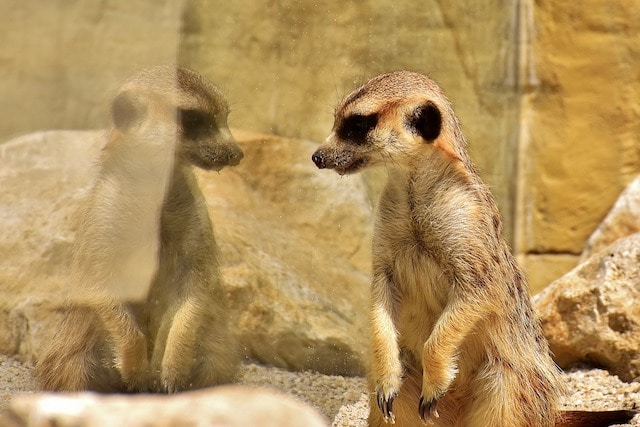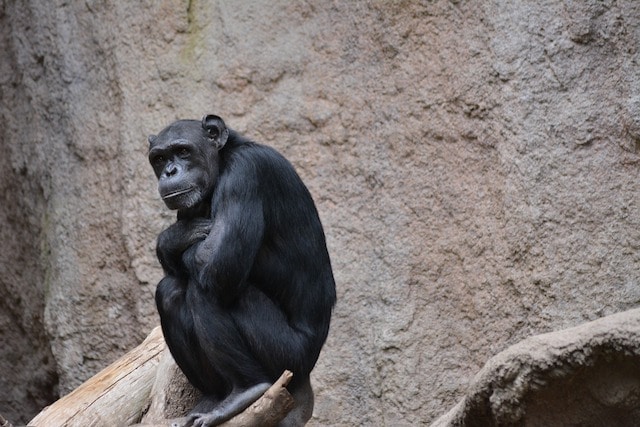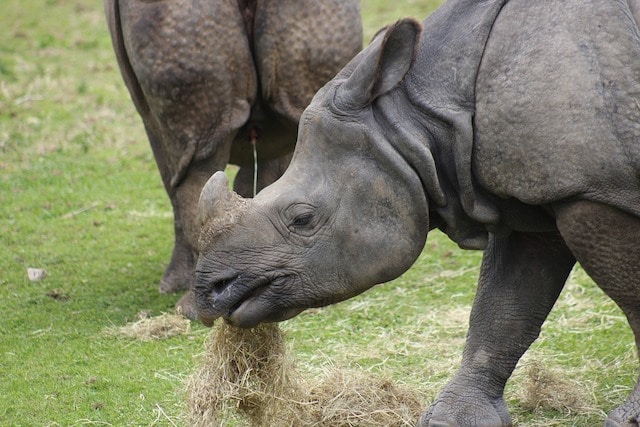https://ift.tt/2oxmkTZ
Most people have fond memories of going to the zoo. The experience of waiting, in anticipation, to see a lion or a tiger come out of its cave. Leaning close to the glass as a chimpanzee or orangutan comes closer.
However, the animals we witnessed on those visits didn’t feel the same thrill that we did. They were, quite possibly, in great pain. We’ve come to accept that other sentient beings can be used for entertainment or pleasure, but it may be time reevaluate that belief. It turns out that zoos have a dramatically negative effect on the animals they’re supposed to protect. And although zoo advocates would argue that endangered species are protected by zoos, the overwhelming consensus is that it’s just not true.
10. Propagation, Not Preservation
One of the initial moral justifications for erecting zoos was that it protected species that were endangered, and allowed them to reproduce in a safe environment before being sent back into the wild. This argument has proved to be incorrect on several accounts. The truth is that most animals confined in zoos are not endangered. In addition, animals born in captivity have small survival chances if they’re released into the wild. Even so, most zoos have no intention of releasing baby animals and parents into the wild. Zoos, as we sometimes forget, are businesses and what drives business is new products. The arrival of a baby chimpanzee or cub brings in customers, which torpedoes the narrative of breeding for preservation.
If we want to become serious about protecting endangered species, we must protect them in the wild. Studies have shown that “without conservation in the wild there is no point in captive breeding.” If we’re seriously about protect animals, let’s start in their natural habitats.
9. Traumatizing For Animals
Billy is a 32-year-old Malaysian Elephant who has lived for two decades in the Los Angeles Zoo. His other elephant companions died and he was left all alone. Despite having an average lifespan of 65-70 years, his fellow elephants, at the Los Angeles Zoo, died before the age of 20. Billy himself displayed signs of trauma and hardship, uncommon for such a young elephant. He had tail abscesses, infections, and even developed a stereotypy — a repetitive head tic that is indicative of severe duress commonly found in confined animals and humans.
Elephants are profoundly intelligent creatures who can recognize their faces in the mirror, comfort one another, and remember instances of pain. Their experience in zoos is not only captivity but imprisonment for these intelligent creatures. For most animals kept in captivity, a psychological disorder develops called zoochosis, in which the animal paces and sways, relieving itself out of frustration and boredom. Confined to small spaces and without the need to hunt or find food, animals lose what makes them unique. What is a lion, if he does not hunt? Zoos create an existence that not only demeans animals but forces them to lose their very identity.
8. Selling Animals Born in Captivity

A tragic example of the failure of zoos is the case of Edith, a chimpanzee. She was born in 1960 at the St. Louis Zoo, and as a baby she drew big crowds. Soon after her third birthday, Edith was taken from her family and sold several times, visiting five different facilities before finally landing at a Texas roadside zoo called the Amarillo Wildlife Refuge (AWR). An investigation by several animal rights groups found Edith. She was hairless, living in a filthy, barren concrete pit, and surrounded by rotten food.
Unfortunately, Edith’s story is a prime example of the true interests of zoos. Once Edith was no longer cute, and no longer brought in crowds, she was discarded and sold. Zoos across the country engage in this practice, tearing animals from their families simply to make a buck. It’s a shameful practice for an institution that claims to care about animals.
7. Kids Don’t Become Conservationists
As we’ve mentioned, zoos do seem to have a great impact on children. Seeing their favorite animals appears to make them more excited and interested in the topic of conservationism. The truth is that zoos don’t truly have this sort of impact. A study conducted by Conservation Biology found that the majority of 2,800 children who visited the London Zoo demonstrated no positive learning outcomes at all. Not only were the children deemed to have not learned anything on the trip, but many even came way with a negative experience.
Authors of the study argue that despite zoos promoting themselves as offering educational programs for children, the programs fail to impact kids. The notion that animals need to be kept in captivity to help educate children about conservation seemingly falls on its head. Other methods can surely be developed to make children interested in the wildlife without seeing animals in person. If dinosaurs can still be a fascinating for children, surely chimpanzees in the wild can.
6. Dangerous For Animals
Despite not having predators in their environments, animals are still in danger by living in Zoos. Years ago, at the Dallas Zoo, a gorilla named Jabari tried to escape. Jabari managed to jump over the walls and moats that imprisoned him and even evaded the electrified wires, only to be fatally shot by police. While seeking an escape from his confinement would be more than worthy for Jabari’s actions, it turns out teenagers were taunting the animal with rocks prior to his escape.
In 2005, two polar bears died within weeks of each other at the St. Louis Zoo, and both deaths were preventable. Churchill died after ingesting an object that was thrown into the exhibit, while Penny died from an infection that was caused by having two dead fetuses in her uterus. There are countless cases of animal deaths at zoos that were preventable and were caused by the nature of zoos themselves. If zoos repeatedly lead to the unnatural deaths of animals, maybe the zoos themselves have become the predatory entities?
5. Animals Driven Crazy
There are telltale signs of when a human being has begun to descend into madness. Talking loudly to oneself aloud, twitching uncontrollably, and drastic mood swings. The truth is that animals can also demonstrate traits of mental illness.
In the 1990s, a polar bear named Gus, in the Central Park Zoo, scared visitors and caretakers alike by “compulsively swimming figure eights in his pool, sometimes for 12 hours a day.” Visitors witnessed Gus stalking children from his underwater window, which eventually prompted zoo staff to put up barriers to keep him from scaring them. Gus came to be known as the “bipolar bear.” There are numerous cases just like Gus’s of animals taken from the wild, unable to cope with losing their families and becoming withdrawn and sick. It’s a reminder that humans need to understand that these animals are sentient beings that can feel, and that can experience pain.
4. Mistreatment of Animals
There are a lot of stories that will make you lose a little faith in your fellow man. We’ve decided to highlight just a few of these cowardly actions. Our American readers can breath a sigh of relief, as the worst instances have occurred abroad. In 2010, the Shenyang Forest Wild Animal Zoo allowed 11 of its Siberian tigers to starve to death in “cold, cramped metal cages.” To make matters worse, the Siberian tiger is an endangered animal.
Another horrific case of abuse also took place in China, with animal rights activists chronicling cases of “live monkey fights, bears forced to walk across tightropes, and lions that were beaten so that they’d jump through flaming hoops.” An internal review in China found that in just three months, there were more than 50 zoos that were documented abusing their animals. The outrageous behavior continued on after the poor animals were dead, as many of the zoos were found to sell rare dead animals to dining establishments for supplemental income. For many endangered animals that meant a journey of captivity and abuse to dinner plates.
3. Not Enough Work to Fight Endangerment
Zoos have been around for quite some time. Nearly 400 years of wildlife parks, safaris, and nature parks, and too many of these man-made forms of captivity have done next to nothing to fight against or reverse the decline of endangered species. In fact, “the rapid loss of species we are seeing today is estimated by experts to be between 1,000 and 10,000 times higher than the natural extinction rate” (rate if humans weren’t in existence). Obviously, that cannot and should not be attributed entirely to zoos. But they certainly play at least some role.
Unlike past mass extinctions that were caused by outside factors, the cause this time is the result of one species: humans. So, instead of attempting to create a narrative based around zoos, conservationists must protect endangered animals where they belong: the wild.
2. “Surplus” Animals Killed
The idea that zoos actually carry out the killing of animals may come as a surprise, but it’s very much become routine in most zoos. A “surplus animal” is one that has “made its genetic contribution to a managed population and is not essential for future scientific studies or to maintain social-group stability or traditions.” In other words, if a zoo already has more than enough male chimpanzees or female giraffes, it’ll make the decision to either sell or euthanize an animal. These animals have already bred with several partners and, in a way, produced their own replacements. Lifetime care is not something that’s in the zoo’s business model.
A country that has taken euthanizing zoo animals to an extreme level of callousness is Denmark. In 2014, zoo patrons witnessed a healthy giraffe shot by “conservationists” and then dissected in front of the public. The poor giraffe was eventually fed to the zoo’s lions. This wasn’t a one-time thing. The next day the public was treated to the dissection of a “surplus lion” who was killed the past year and frozen. Children called out “liver” as the long butcher knives removed its intestines. Educational, but frightening nonetheless.
1. Lack of Laws to Protect Animals
After all of this abuse and mistreatment, you’d think that laws would be passed to protect captive animals. The truth is that in far too many countries there aren’t any such laws. In some cases, countries have no laws whatsoever to protect captive animals. While the United States does require licenses for animal exhibitors, the application process is far too liberal. In most states, just about anyone can have a wild animal on their property. In many instances, this means captive animals aren’t even afforded the “luxury” of a zoo; instead they end up in a residential house, locked up in an even smaller cage.
The only stipulation for animal exhibitors is that the animals must be fed, given water, and provided with shelter. Despite overwhelming evidence suggesting the negative impact on a confined environment, “cage space regulations require only that the animals be provided with enough room to stand up, lie down, turn around, and move around a bit.” That means lions, whose forefathers prowled vast, open expanses, can barely take a step in their cage. It’s a sad fate for too many great animals.
AMAZING
TRENDS,AMAZING
via Toptenz.net http://www.toptenz.net
May 14, 2018 at 05:29AM
.png)







No comments:
Post a Comment